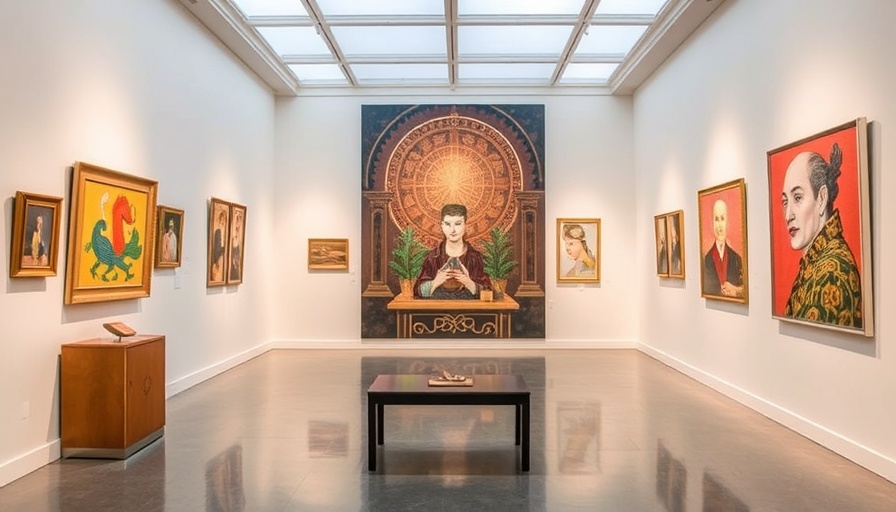
Transforming Spaces: The Healing Power of Art
In an era where our workspaces have shifted dramatically due to the rise of remote work, the need for environments that foster creativity and well-being has never been more critical. A new art gallery designed to heal is emerging from the Corcoran School of Arts and Design, embodying a shift toward art that not only beautifies our surroundings but also promotes mental health. This innovative space aims to support the artists of tomorrow while providing valuable insights into how our environments can influence our productivity and mental clarity.
Redefining Workspaces Through Art and Ergonomics
The designed gallery integrates art in a way that directly addresses the discomforts often associated with work environments. For digital nomads crafting home offices, this concept can serve as a model. Ergonomics, the science of designing workspaces to optimize human well-being and overall system performance, plays a critical role in reducing fatigue and enhancing focus. Elements of this new gallery, such as light, color, and spatial arrangement, are being studied and implemented into workspaces to create a more inviting atmosphere.
Understanding the Connection Between Art and Mental Health
Art has long been recognized for its therapeutic effects. Viewing or creating art can significantly reduce stress, anxiety, and depression. The gallery’s commitment to healing through artistic expression resonates with the needs of those who often work in isolated or uninspiring locations. For digital nomads, integrating artistic elements into their workspaces can help bridge the gap between productivity and personal well-being.
Future Trends: Art-Centric Home Workspaces
As many individuals continue working remotely, we can anticipate a rise in the incorporation of art into personal workspaces. This trend can fundamentally shift how digital nomads approach their home offices. Adding art pieces that inspire and soothe will not only enhance the aesthetics but also create a more engaging and productive environment.
Practical Tips for Creating an Art-Inspired Workspace
1. **Choose Artwork That Resonates:** Select pieces of art that inspire you or evoke positive emotions—this personal connection can make your workspace feel more inviting. 2. **Utilize Color Psychology:** Different colors can influence mood and productivity. For instance, blue shades can enhance concentration while warmer hues can be energizing. 3. **Incorporate Natural Elements:** Combining art with plants can bring life and a calm atmosphere to your workspace, supporting your mental health.
Embracing Community: The Social Aspect of Art
The gallery also emphasizes community, urging individuals to engage with artists and fellow creatives. This social connection is vital for remote workers who might experience isolation. By attending gallery events or discussing art online, digital nomads can find camaraderie and support, enriching their work-life balance.
Final Thoughts: Integrating Art into Remote Work
As more of us navigate the complexities of hybrid and remote work models, integrating artistic elements into our environments can significantly enhance our well-being and productivity. The Corcoran School of Arts and Design is leading the way in this transformative understanding of workspaces. By focusing on both the aesthetic and functional aspects of our surroundings, we can create spaces that not only facilitate work but also inspire health and creativity.
Discover how you can incorporate art into your own workspace to improve comfort and productivity. Embrace these changes now to create a nurturing environment for your remote work lifestyle!
 Add Row
Add Row  Add
Add 




Write A Comment